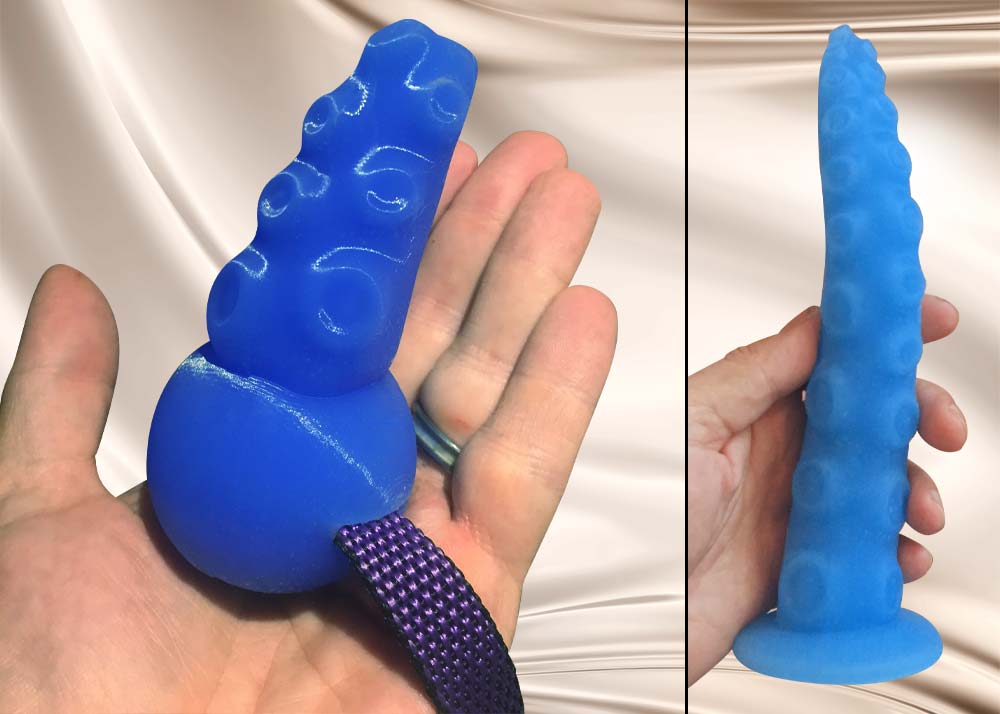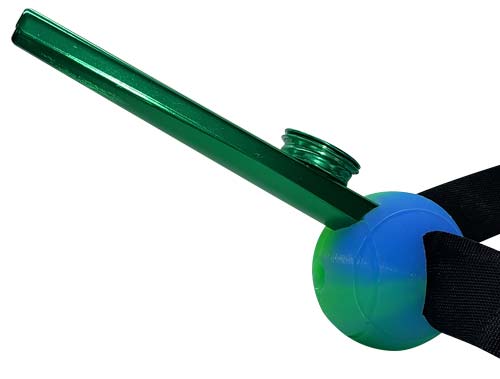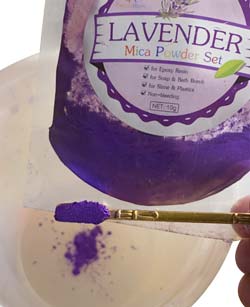Tutorials
Part 2: Basic Silicone Coloring

Making your own sex toy is easy. But what if you want it to look a bit better?
Pouring sex toys is fun, but plain white is so boring. In this tutorial, we'll talk about the basics of coloring silicone, and then in the next part we'll talk about techniques for making multicolored and UV-reactive fluorescent toys.
Basic Coloring
Download - Print - Pour - Enjoy
There are several ways to color silicone, using dedicated silicone pigments, with cosmetic-grade mica pigments of the type used for soaps and cosmetics, and with non-toxic acrylics.
Whatever type of pigment you use, the basic idea is the same. Mix the pigment into one part of the silicone, before you stir in the second part. Mix throroughly, then add the second part of the silicone, then mix again.
Dedicated silicone pigments are available from Smooth-On and other silicone vendors. It mixes easily and is compatible with all kinds of silicone, but it tends to be very expensive and is available in a limited range of colors. A little goes a long way, though; just a pinhead-sized amount of silicone pigment is enough to color a sex toy. Sex toys colored with silicone pigments tend to have a rich but flat color.
Cosmetic-grade mica powder is available from a ton of places including Amazon. It's body-safe and non-toxic, it's cheap, and it is available in a huge range of colors. Rather than the flat color you get with silicone pigments, mica powder creates an interesting marbled or swirled texture. The down side is you don't always know what you're going to get, and it can be a little hard to control. These are all taken from photographs of sex toys I've colored with mica powder:

You can mix different mica colors. However, this takes some experimentation! The way the color looks before the silicone cures often isn't the way it looks after it cures. Still, if you're willing to do some experimenting, you can get some interesting colors.
Acrylic pigment powder works well in silicone too, and is available in a huge range of colors and in UV-reactive flourescents. I've had some interesting results with the acrylic powders from Culture Hustle.


Test your colorant
Silicone can sometimes be fussy. A little goes a long way, especially with silicone pigments. Adding too much pigment can inhibit curing.
Remember to make the coloring a little stronger than you'd like when you first mix it into the first part of the silicone, since you'll be adding the second part once you've mixed the color in!
If you're interested in more advanced coloring techniques that go beyond simple solid colors, read on.
License
By downloading mold files from this site, you agree to the following terms:
The mold files and sex toy designs are protected by copyright. You may use the files to print a mold on a 3D printer. You may use the molds to cast sex toys for your own personal use, You may not:
- Sell, give away, or otherwise transfer the mold files to anyone else
- Use the molds to make sex toys for sale to others
- Use the molds to make sex toys to give away to others in combination with sale of another product
- Reverse engineer the sex toy designs for sale, or to create derivative molds or designs for sale
